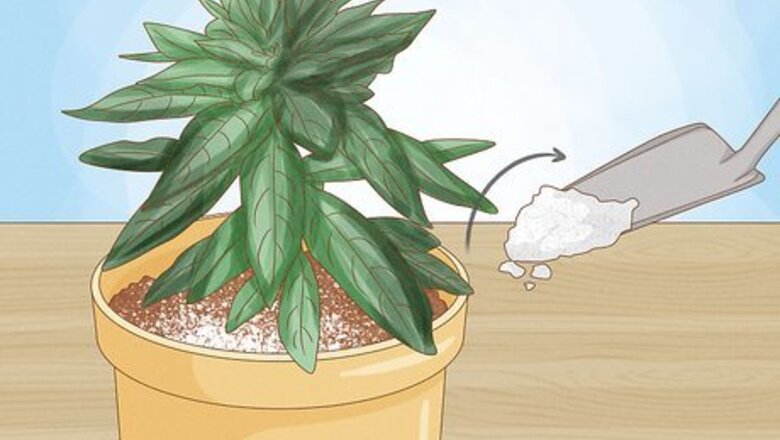
views
Removing Excess Fertilizer
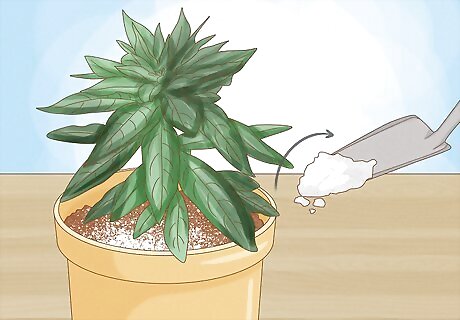
Remove any visible fertilizer. If the fertilizer is a powder, and you can see it on the plant or topsoil, removing it will prevent further overfertilization. Additionally, if the fertilizer salts have created a crust (typically white), that must also be removed. Use caution when scooping the fertilizer away to ensure you don’t further distress or damage the plant or roots.
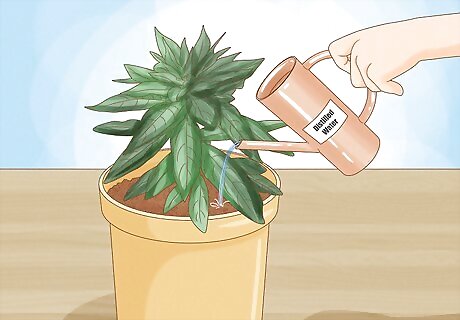
Leach the soil with water. This will move the fertilizer further away from the plant's root system, helping to prevent additional overfertilization and permitting the plant's roots to begin to heal. Use distilled, room-temperature water to leach nutrients from the soil, if possible.
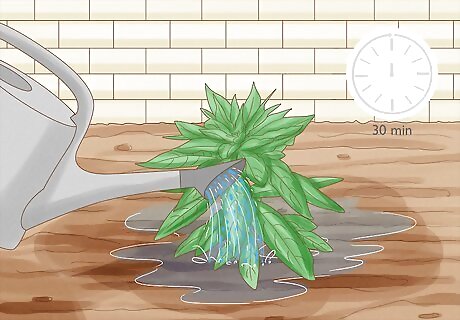
Flood the root system. If the plant is in your garden, flood the soil around the root system before allowing the water to continue to drip at the plant's base for 30 minutes. It's easiest to flood the root system using a garden hose, which creates a continuous stream.
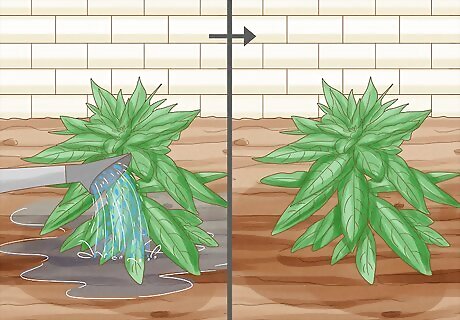
Allow the water to drain away. If the plant is in a pot, fill the pot with water and allow it to drain out the bottom. Repeat this step four times in order to make sure all the fertilizer is washed, or leached, away from the plant's roots.
Saving Your Plant
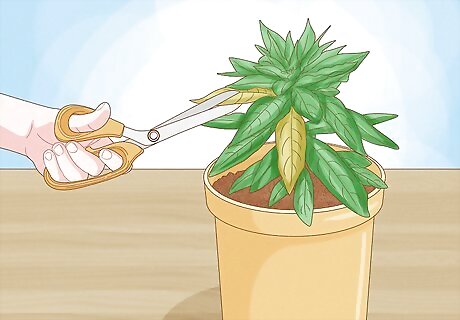
Remove damaged foliage. Using a pair of scissors, cut off damaged, misshapen, or wilting leaves. Even though you can rescue an overfed plant, the damaged leaves cannot be revived. Removing them is important to ensuring the plant's future health, and if they are permitted to remain, your plant may become a victim of pests or diseases.
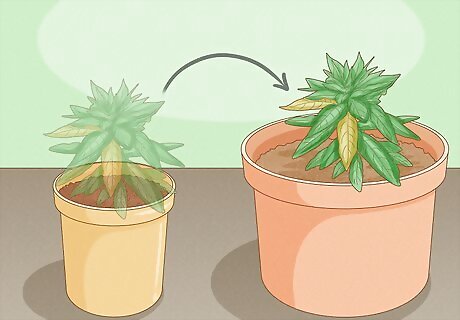
Replant if possible. If the plant was severely overfed, transferring it to new, fresh soil after the leaching process is complete will provide your plant and its roots an opportunity to heal. Choose a new spot in your garden, well away from the fertilized area, or repot a plant with fresh soil. If your plant is too large to move or you don’t have any available space left, add new soil to the container or plot instead.
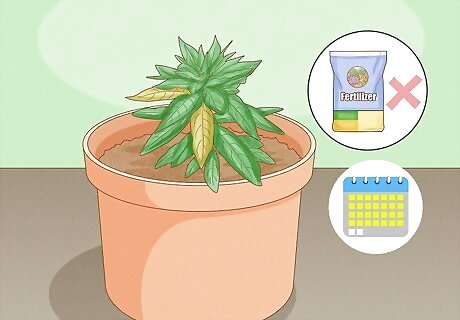
Avoid fertilizing your plant for several weeks. If your plant has been overfed, do not provide it more fertilizer until it appears healthy again (3 to 4 weeks). Allow time for your plant and its roots to recover from the strain of an overabundance of fertilizer.
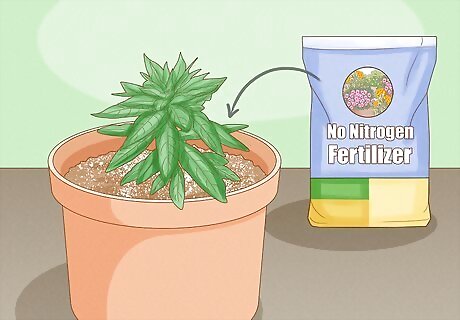
Choose a fertilizer without nitrogen. When the time comes to begin feeding your plant again, you can prevent many of the negative effects of overfertilization by using nitrogen-free fertilizer. Use only one quarter or one half of the recommended amount of fertilizer as directed on the package.
Identifying an Over Fertilized Plant
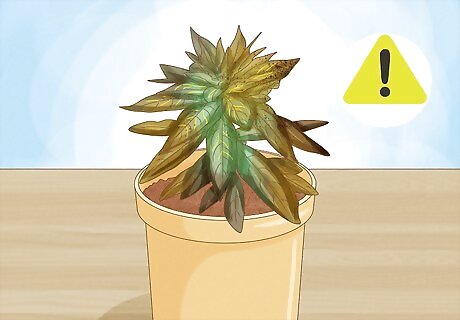
Watch for weak or dying plants. If you’ve provided the proper amounts of sunlight and water, plants or seedlings that are weak, stunted, or dying could be suffering from an overabundance of nutrients. Look out for limp, wilted, crinkled, brittle, or very small roots, stems, and foliage.
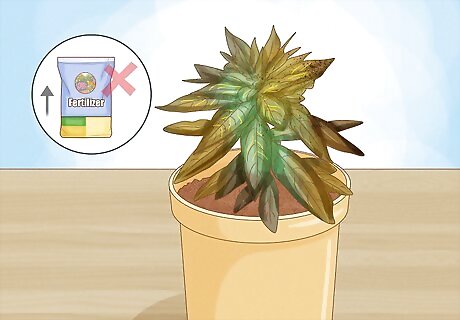
Check the leaves for discoloration. Look at the tops and bottoms of the leaves and see if you notice any discoloration or irregularities. Spots, pale coloring, brown or reddish leaves, and yellowing veins indicate too much fertilizer has been used.
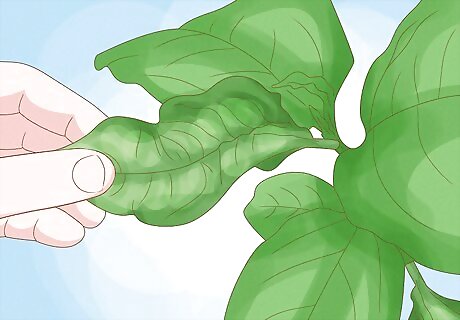
Look for misshapen leaves. If the leaves on your plant are misshapen, it could indicate they are not receiving the right amount and mix of nutrients. Watch for curled edges and asymmetrical leaves, as well as wilting.
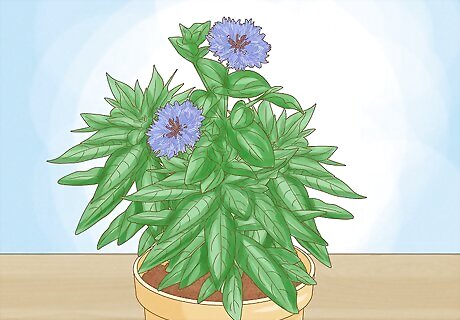
Notice excessive foliage with few flowers. Your overfertilized plant may have an overgrowth of foliage but very few blooms. Since the plant is lush, you may think that all is well. However, the plant is unable to bloom.
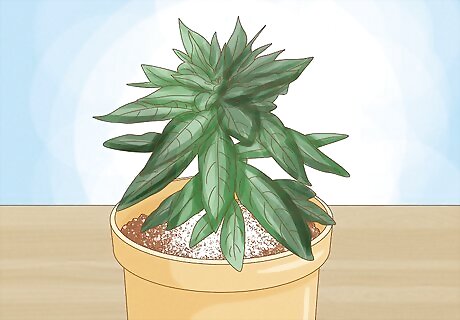
Examine the soil for fertilization buildup. Look for a white or crusty buildup on top of the soil of the plant. This buildup is the result of using too much fertilizer or fertilizer left behind when water evaporates.
















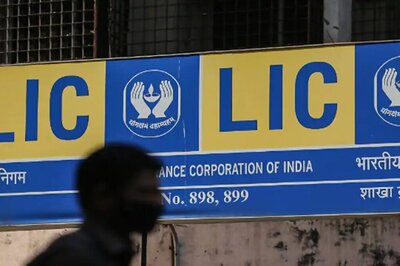

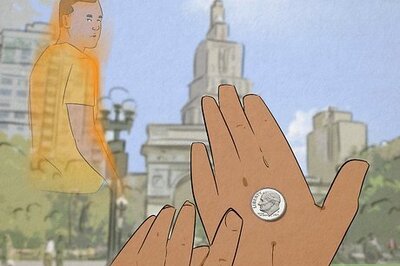
Comments
0 comment